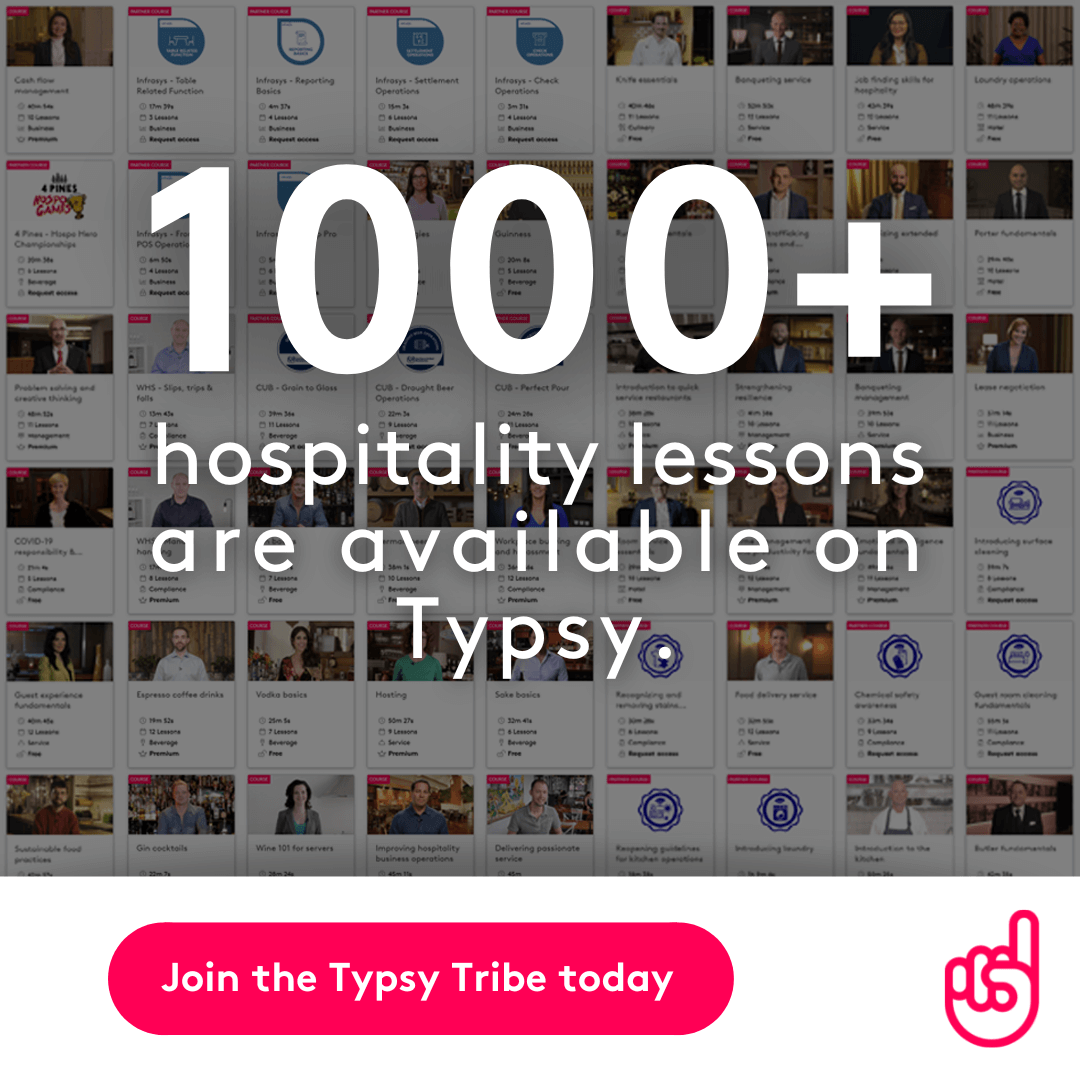It is well known that there are some key ingredients to a successful restaurant; strategic planning (scalability & sustainability), flawless operating systems (consistency), marketing & customer experiences (being memorable), and finally; living in the moment (profitability).
First and foremost, restaurateurs need to remember that this is a business.

With business, comes a need to understand your numbers, your statements, and key performance indicators at any given moment. While you likely hire an accountant and bookkeeper for your restaurant or hospitality business – you still need to not only know but understand the financial health of your business at any given time of day.
A successful venue understands that they must maximize every day, every hour, every seat, every event, and every food and beverage order. Empty seats and minimal take-out/delivery orders along with minimal productivity is simply not good for business in this industry; where costs must be controlled and where revenue must be generated on a sustainable basis.
Gone are the days when you had to schedule meetings with your accountant or be at your restaurant to access the information stored in your POS system to know your numbers. In 2019 - there is really no excuse to not know the financial health of your restaurant or hospitality business thanks to advanced reports and cloud-based POS systems.
That said, I recently worked with a restaurant that was doing well over $100,000 per month in revenue but not making any profit. While ‘sales’ are great – you need to control your costs and understand how they’re being used in relation to your revenue.
Let’s have a look at the financial statements you should know and understand so the above doesn’t happen to you.
Financial Forecasts
It doesn’t matter if you’re just starting out or if you’re a seasoned operator, you must ensure that you can meet your guests' demands, pay your bills on time, and live a ‘healthy’ lifestyle for you and your family.
Forecasting (or budgeting) is the first step to financial success and involves the accumulation of your historical internal data and your external market factors such as market trends, socio-demographics, and hyper-local competition - to name a few.
Studying this information will help develop patterns and accurate predictions throughout different day-parts, months, and seasons etc. Inaccurate forecasts can lead to upset shareholders, mismanaged expenses and, potentially, running out of cash flow for your restaurant.
When completing your forecasts for each week, month, quarter, and year in terms of traffic, sales, revenue per guest, and a list of all expenses - there is a strong, natural temptation to be optimistic when forecasting your growth. While this is great – it can lead to challenges.
That’s why it is also ideal to create a ‘sensitivity analysis’ that includes a minimum of two-three variations of your forecast based on a 10-20-30% drop in traffic. How will your restaurant perform and strategically scale downwards in these situations? How will your operations and cash flow be affected?
These forecasts should also not be ‘static’. Don’t make one at the beginning of the year and then ignore it for the next 12 months. Regularly evaluate how close your operating results mirror those forecasts, and make changes on-demand to reflect any new information provided to you.
You must be prepared for a variety of financial scenarios through proper business planning and forecasting to detect a problem before it develops into a nightmare for you and your team.
Key Performance Indicators
It is important to understand projected break-even points, financial benchmarks, and other Key Performance Indicators (KPI’s) so you know how and when you can generate a profit for your business.
Using ‘KPI benchmarks’ is a way for your business to quantify its set objectives so you can regularly check up on your performance and determine where you are successful and where you may need to improve.
The most useful KPI’s in the restaurant space are:
• Cost of Goods Sold
• Menu Mix Analysis
• Production Time
• F&B Waste
• Labor Costs
• F&B Sales per Guest
• Loyal Guest Spend
• Inventory Accuracy
• Marketing & Advertising
• Overall Return on Investment
Developing and determining the success of financial KPI’s should follow the SMART acronym; Specific, Measurable, Attainable, Realistic, and Timely. You must create opportunities and strategic goals presented in either dollar values or percentages so that you and your team can keep an active pulse on its financial health.
Financial Statements
While we won’t get into the mathematical calculations in this article I want to continue driving the message about profitability. Financial statements are the next segment to success and should coincide with your forecasts and benchmarks. Here are five key reports that will help you understand where your restaurant is currently positioned financially.
Sales Reports
These daily, weekly, and monthly sales reports in addition to ‘sales by employee’ and ‘sales by menu item’ should be easily accessible on your point-of-sale system. These generated reports need to be compared with your overall costs so you can make educated business decisions on-demand (or in the moment).
Prime Costs
These are your total ‘cost of sales’ in addition to your ‘payroll costs’; such as hourly staff, salaried staff, and associated taxes, insurance, and benefits. If you can control these food, beverage, packaging, and labor costs in a strategic manner (for example under 60% of your gross sales) – you can begin to control your levels of overall net profit.
Inventory Reports
While there is plenty of technology on the market to ‘manage your inventory’ – you still need to understand the fundamentals of inventory and what the results generated, actually mean.
You need to know the total cost of your current on-hand inventory, the unit cost of each item, and know the quantity of ‘goods’ on-site in your venue.
Once you’ve been operating for a number of months – you will notice trends in your inventory that will help you control prime costs and minimize potential waste. You will know what sells on a Wednesday versus a Friday which will also help with your ‘mise en place’.
Inventory reports should also go hand-in-hand with your standardized recipes. Your tested & perfected recipes should provide both a method (instructions for making a food dish or beverage) and the list of necessary ingredients, specified as the goods found in your inventory.
To ensure that your guests receive consistent product and that your costs are accurately reflected, you need to use well-tested, standardized recipes that will position you to have the most cost-effective goods, labor, and equipment on-site which accurate inventory reports will help you with.
P&L Statement
Quite possibly the most important statement. At the absolute most basic level, this statement reflects real costs that are subtracted from real sales. At the end; the result is a dollar value that gives you a solid idea of your venues financial health.
Weekly statements are recommended so you can keep track of what is most profitable or costly to your venue by reviewing and analyzing the current week’s actual, current week’s budget, and last weeks actual.
Within this report is also a great opportunity to list out all percentage of costs & sales measured against many of your key performance indicators.
At the end of the day, this report should be a ‘dashboard’ of important financial information that can be viewed in one glance. All of your efforts in understanding your venues financials should be captured in the accurate details of a profit & loss statement.
Cash Flow
How much ‘cash’ you have to buy or repair equipment, purchase needed small wares, or even pay some of your bills and vendors are known as cash flow.
You obviously want the result of a positive cash flow to invest in growing your business.
To better understand the true form of cash flow, it is best to coincide this with both your profit and loss statement and also your ‘balance sheet’.
This balance sheet allows operators to forecast short and long-term cash flow. As important as it is to review the balance sheet, few restaurateurs ever bother to prepare one. By checking the accuracy of your balance sheet, an operator can ensure the accuracy of their income statement.
The balance sheet lists all of your assets, liabilities, and equity of the restaurant or hospitality business. It is important that assets and liabilities are properly classified on the created balance sheet; therefore it is ideal to work closely with your accountant on this to better understand your true ‘cash flow’ statement.
It’s critically important that you always know the financial health of your business. It really doesn’t take a lot of effort to get your business finances under control and detect any issues before they grow out of control IF you have the knowledge, systems, and supportive cast working both for you and with you.
Take control of your venue's finance with our Profit and loss essentials course.
Sign up your business today and get the first 10 day's FREE!
 |
As the Founder & President of KRG Hospitality Inc. in addition to being the author of the book ‘Bar Hacks’, Doug Radkey’s impressive career spans more than two decades and includes all aspects of food, beverage, and hospitality development. This storied brand has proven success since 2009, throughout a variety of markets found within Canada, The United States, and abroad by being a creative agency with a focus on planning, development, and support for independent restaurants, bars, hotels, and other hospitality related properties. |
You might also like:
|
How to write a business |
.gif?width=1200&height=400&name=Hubspot%20Blog%20banner%20GIF%20(2).gif)
.png?width=948&name=Typsy%20%20We%20teach%20hospitality%20to%20the%20world%20%20typsy.com%20blog%20banner%20_%20(1).png)





